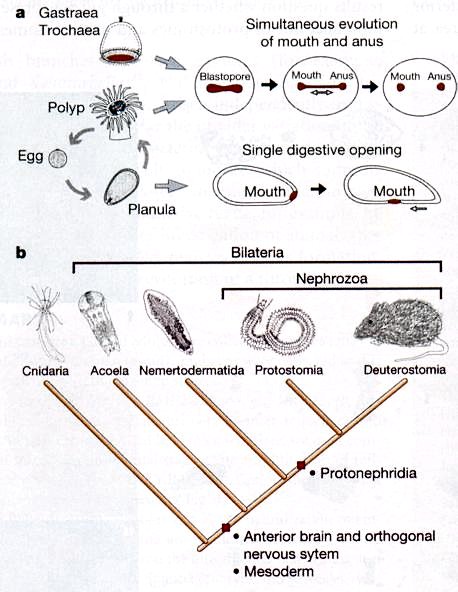 |
Excretory - Sponges and Cnidarians have radial symmetry. These animals possess a single digestive opening served as both mouth and anus. Even though evolution doesn't care about aesthetic, such arrangement is highly inefficient to say the least. It is commonly believed that during the transition from radial to bilateral symmetry, both openings evolved simultaneously by the lateral closure of a slit-like blastopore with the ends giving rise to a mouth and anus (Figure 08c). In deuterostomes (secondary mouth) the site of gastrulation (the site at which the endomesoderm forms) becomes the anus and the mouth is formed at a different end. The relationship is not that clear in roundworm (protostomis), and the flatworm (nemertodermatida) still retains only one opening although it has bilateral symmetry. Research in 2008 suggests another model, which hypothesizes the single opening shifts ventrally during the transition to bilateral symmetry with the anus fully formed only after protonephridia (which establishes a system of canals to expel watery waste, like the kidney in mammals) as indicated in Figure 08c.
|


